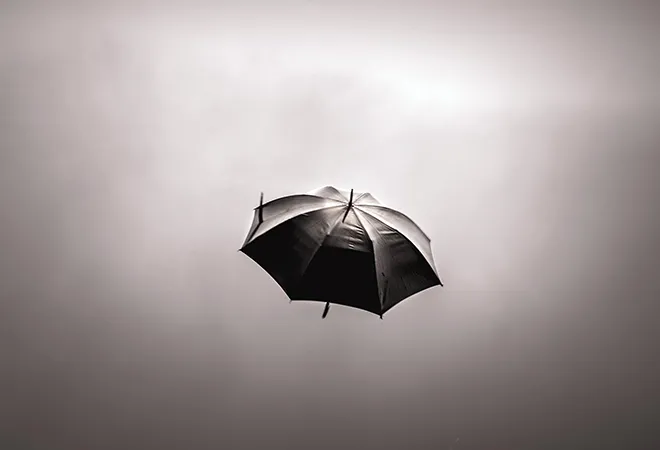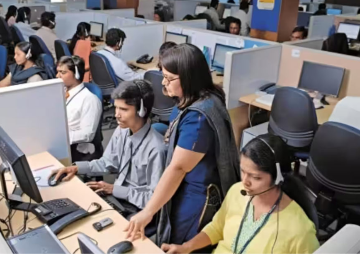
The Delhi government’s work on harvesting rainwater for augmenting city’s water supply can be traced from 2002 onwards. A law requires mandatory installation of rainwater harvesting (RWH) systems in existing and new properties (both government and private) measuring 100 sq m and above. In addition, incentives, such as financial assistance for installation of RWH systems, and rebate on water bills, are given to consumers.
Accordingly, RWH systems have been established in several properties/buildings (including offices, hospitals, schools and colleges, universities and research institutes, residential colonies, housing societies, international airport, etc.), and in the floodplains of river Yamuna. Rainwater received at such places recharges groundwater, and is also stored for reuse by some consumers.
A review of current status of Delhi’s RWH sector reveals that its growth and development is occurring at a slow pace. It is noted that at many places, RWH systems have either not been installed, or existing systems are poorly maintained. Thus, a significant amount of rainwater received in Delhi during every monsoon season (June-September) is lost.
At many places, RWH systems have either not been installed, or existing systems are poorly maintained.
It is important to improve this situation through greater RWH. Presently, due to less availability of raw water for production, as well as numerous water management inefficiencies, the Delhi government is unable to meet the water needs of many residents. Therefore, it is necessary to review the current RWH governance strategy of Delhi government to know how the work is being done, and address problems and deficiencies in current practices.
The task-in-hand is to establish RWH systems in potential areas of the city, and ensure that existing and new systems are functional. Some issues and suggestions in this regard are mentioned below.
Database on number and condition of RWH systems
Though Delhi Jal Board (DJB), the Delhi government’s water agency, maintains some data on properties (such as government offices, schools and colleges, hospitals, etc.) with and without RWH systems, the full set of city-level data and information on every installed RWH system in government/private properties/buildings and open/public spaces, its functional status, and quantity of rainwater harvested are not available. Similarly, complete information on number of government/private properties/buildings and open/public spaces in the city where RWH systems can be installed is not available.
It is absolutely necessary to keep record of such data for monitoring progress in work. For this purpose, Delhi government should create an online system that ensures availability of latest information on the number and condition of every installed RWH system in the city. It will also be useful to conduct a study for identifying potential properties/buildings and open/public spaces where RWH systems can be installed.
Maintenance of existing RWH systems
Installed RWH systems should be in good working condition for deriving maximum benefits. To ensure this, Delhi government has made it mandatory for consumers to follow DJB guidelines for installing and maintaining RWH systems, and furnish functionality certificates of their RWH systems in order to avail rebate on water bills. However, the guidelines are not being adhered at many places, and hence the condition of systems has deteriorated; many are dysfunctional. Delhi experiences dust storms many times in a year. Hence, the rooftops, entry points of water pipes/gutters, and storage tanks/pits require frequent cleaning. But the consumers do not take steps to maintain their systems due to time and costs involved, and would rather pay penalty to the government.
Thus, Delhi government should support consumers in identifying and making available services of experienced RWH system agencies for the purpose of maintenance of installed RWH systems. Professional companies having expertise in RWH can play an important role in this regard.
Harvesting rainwater for groundwater recharge as well as for people’s use
It is noted that most of the installed RWH structures only facilitate recharge of groundwater (GW), and not reuse of rainwater for people’s consumption. While GW recharge is absolutely necessary in view of falling water table in many parts of Delhi (caused by illegal extraction/overexploitation), it will be beneficial to also make arrangements that allow using a portion of rainwater for meeting various human needs, both potable and non-potable. If this aspect is properly addressed, there will be significant savings of potable water supplied by the water agency. According to an estimate, up to 40 percent of water supplied to households is used for non-potable purposes, such as water used in gardens, water coolers, washing cars and driveways, toilet cisterns, etc.
Thus, Delhi government and citizens must ensure that in addition to GW recharge, rainwater is collected in storage tanks/pits for reuse. For this purpose, following arrangements are required: blocking impurities, waste and sediments from entering drain pipes/gutters, storage tanks; cleaning tanks and disinfection with chlorine to kill algae, bacteria and viruses; using non-toxic materials in tanks, and maintaining healthy standards of acidity (i.e., pH value of 7); installing downpipe diverter and bio-mineral cartridges; and installation of a pipeline network for transfer of water from rainwater storage tank to the location of consumer.
Installation of RWH systems in potential areas
Despite being made mandatory, there are a large number of government and private properties in the city measuring 100 sq m and above, where RWH systems have not been installed by property owners/occupiers. In the case of households, it is noted that they are not in favour, as establishment of RWH systems and their maintenance means investment of time and money. In their view, while water received from municipal pipelines is less, it is still the best and most convenient option. In this situation, installation of RWH systems in such properties is proving to be a big challenge for the government, as consumers are not inclined towards complying with the law.
However given the current water deficit in the city, households’ reliance entirely on piped municipal supply is not a sustainable method. If more water can be obtained through RWH, it would not only meet desired needs of households, but also reduce burden on the city’s water agency.
Thus, the first step in this regard is to organise awareness programmes on significance of water and benefits of RWH for various categories of water consumers. Committed NGOs can be trained and involved in this work. Previously organised programmes by DJB have not covered consumers living in various parts of the city.
There is tremendous potential of RWH in areas where a lot of rainwater gets collected, such as road sides, underpasses, near flyovers, depressions, etc.
Secondly, wherever the need arises, instead of asking every plot owner to install a RWH system, the possibility of establishing neighbourhood-level systems must be explored. In this arrangement, rainwater falling on rooftops of a cluster of houses/properties can be transferred to a single neighbourhood-level pit/tank through a network of pipes. In this method, the responsibility of property owners would be limited to maintaining rooftops, installing pipes/gutters, and maintaining water entry points of pipes, whereas neighbourhood-level pits can be maintained by the Resident Welfare Association or a hired private entity.
Besides households/properties, while RWH systems have been installed at some public places/open spaces/parks, several such areas are yet to be covered. There is tremendous potential of RWH in areas where a lot of rainwater gets collected, such as road sides, underpasses, near flyovers, depressions, etc. RWH in such areas can significantly contribute to groundwater recharge as well as address the issue of flooding. Some of the harvested water can also be transferred to DJB plants for treatment and supply to consumers.
To conclude, there are deficiencies in practices followed by Delhi government for harvesting rainwater. These pertain to lack of data on number of RWH systems in the city and their functional status, limited use of rainwater, and absence of RWH systems in several parts of the city. If significant benefits from RWH are to be derived, these deficiencies must be properly addressed.
The views expressed above belong to the author(s). ORF research and analyses now available on Telegram! Click here to access our curated content — blogs, longforms and interviews.




 PREV
PREV


